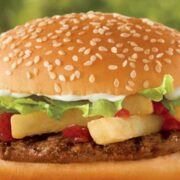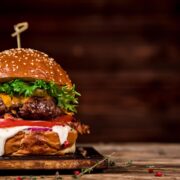About 80% of dieters fail to keep the pounds off in the long run. While it’s true that most diets can help you get leaner, the weight often comes back within months or years. The more you restrict your calories, the harder you’ll find it to maintain your figure.
If you’re serious about weight loss, forget about crash diets, juicing, and other health fads. These practices are ineffective and can harm your health in the long term. Instead, focus on creating a diet plan that fits your lifestyle.
Not sure where to start? Here are five tips on how to choose a diet plan or create one that works for you!
1. Set Realistic Goals
First of all, set realistic goals for your weight loss journey. It took you months or years to gain those extra pounds, so don’t expect to lose them overnight.
Health experts recommend losing no more than one or two pounds per week. It may not seem much, but the results will last.
Another advantage is that you won’t have to cut thousands of calories to achieve your goal.
One pound of fat equals 3,500 calories. This means you have to reduce your energy intake by 3,500 to 7,000 calories per week, or 500 to 1,000 calories per day, to lose one to two pounds.
2. Consider Your Activity Level
The more active you are, the higher your energy requirements. After all, there’s a reason why some athletes consume over 5,000 calories per day.
A great diet plan is one that aligns with your training goals and nutritional needs. The keto diet, for example, can help you get leaner, but it’s not the best choice for active individuals because of its low carb content.
3. Make a Grocery List
Next, make a list of foods you can’t live without. If, say, you love whole grain bread, there’s no need to give up on it. You can still enjoy a slice or two for breakfast, before or after hitting the gym, or on a cheat day.
Be realistic about your food choices. A diet based on fish, for example, won’t work for someone who hates seafood. Write down your favorite foods, as well as those you prefer to avoid.
4. Focus on Your Macros
Focus on the amount of protein, carbs, and fats when creating a diet plan. These are three macronutrients, or macros, that provide your body with energy.
To lose weight, fill up on protein and good fats, such as avocado, nuts, and olive oil. Get the rest of your calories from carbs.
Note that protein and carbs boast 4 calories per gram. The same amount of fat provides 9 calories. However, dietary fat keeps you full longer than carbohydrates.
5. Prep Your Meals Ahead
Now that you have a rough estimate of your daily calories and macros, go ahead and plan your meals. Write down what you’re going to eat over the next few days—and stick to it.
Keep some healthy snacks at hand for when you’re having cravings. Dark chocolate, almonds, walnuts, cottage cheese, and berries are all a great choice. You can even recreate your favorite recipes using healthier ingredients.
Creating a Diet Plan Doesn’t Have to Be Difficult
The key to creating a diet plan that works for you is to consider your lifestyle habits and nutritional needs. Take into account your goals, activity level, and food preferences. Keep your meals simple and get creative in the kitchen. You can also grow your own plants to enjoy the organic fruits.
So, are you ready to take this step? Browse the rest of our blog for more tips on how to look and feel your best!










Comments